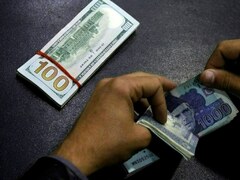Commercial banks have borrowed Rs9.61 trillion from the State Bank of Pakistan (SBP) at an interest rate of 13.04% for a period of seven days, the central bank reported on Friday.
The central bank, however, received no bids for fresh borrowing from the local banks for relatively a longer period of 28 days.
"No bids for 28 days suggest commercial banks are expecting reduction in the cost of borrowing, as SBP's Monetary Policy Committee is scheduled to meet on Monday (January 27) to review its policy rate," Saad Hanif, Head of Research at Ismail Iqbal Securities, told Business Recorder.
Majority financial analysts have projected that the central bank would cut its key policy rate by 1 percentage point to 12% on Monday. The central bank has already cut the policy rate by a cumulative 9 percentage points since June 2024 to 13% at present.
The expected rate-cut decision would bring down the cost of borrowing. Accordingly, commercial banks may acquire additional financing, if required, after the monetary policy review next week at an assumed reduced price.
Commercial banks usually borrow for 7 and 28 days from the central bank to better manage their liquidity positions on the outlook for demand for funds from their clients including federal and provincial governments, businesses in public and private sectors, and individual customers.
Hanif said commercial banks borrowed Rs9.61 trillion for seven days through the SBP OMO (open market operations) to overcome a shortage of finances at the banks.
"The banks faced a shortage of liquidity after they repaid Rs9.93 trillion to the central bank. They had borrowed the funds (Rs9.93 trillion for one week) on January 17, 2025," he said.
The latest borrowing by commercial banks at Rs9.61 trillion was relatively lower compared to the previous one at Rs9.93 trillion, suggesting local banks are gradually retiring outstanding loans to the central bank, according to Hanif.
He said the commercial banks' outstanding loans reduced to Rs9-10 trillion at present from a peak of Rs12-13 trillion hit some six months ago.
The commercial banks borrow from the SBP and refinance mostly to federal and provincial governments to help them bridge their fiscal deficits.
As per the International Monetary Fund's (IMF) conditioning, local governments cannot directly borrow from the central bank. Accordingly, the central bank lends to commercial banks and they subsequently finance to the governments.
They are making such domestic borrowing mostly to repay maturing local debt, make interest payments on the total debt, and pay monthly salaries and pensions in the wake of the collection of lower revenue in taxes than the requirement.
Pakistan has continued to depend on borrowing in the wake of low collection of revenue in taxes by the Federal Board of Revenue (FBR) compared to the demand for financing at federal and provincial levels.





















Comments